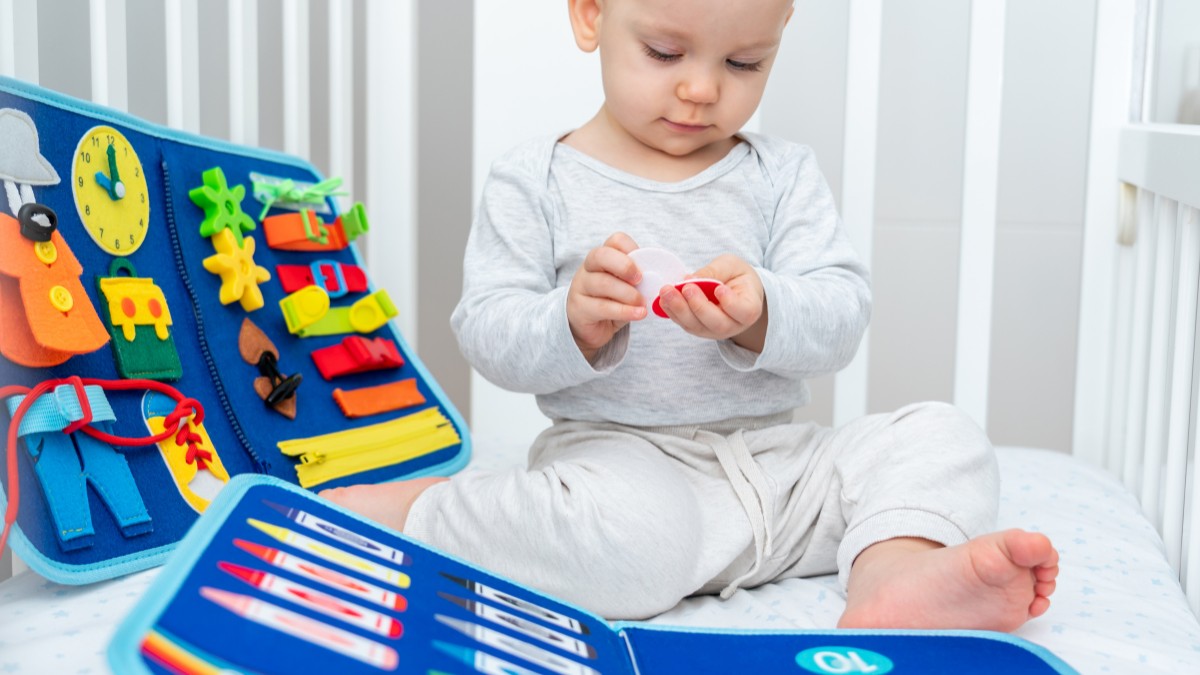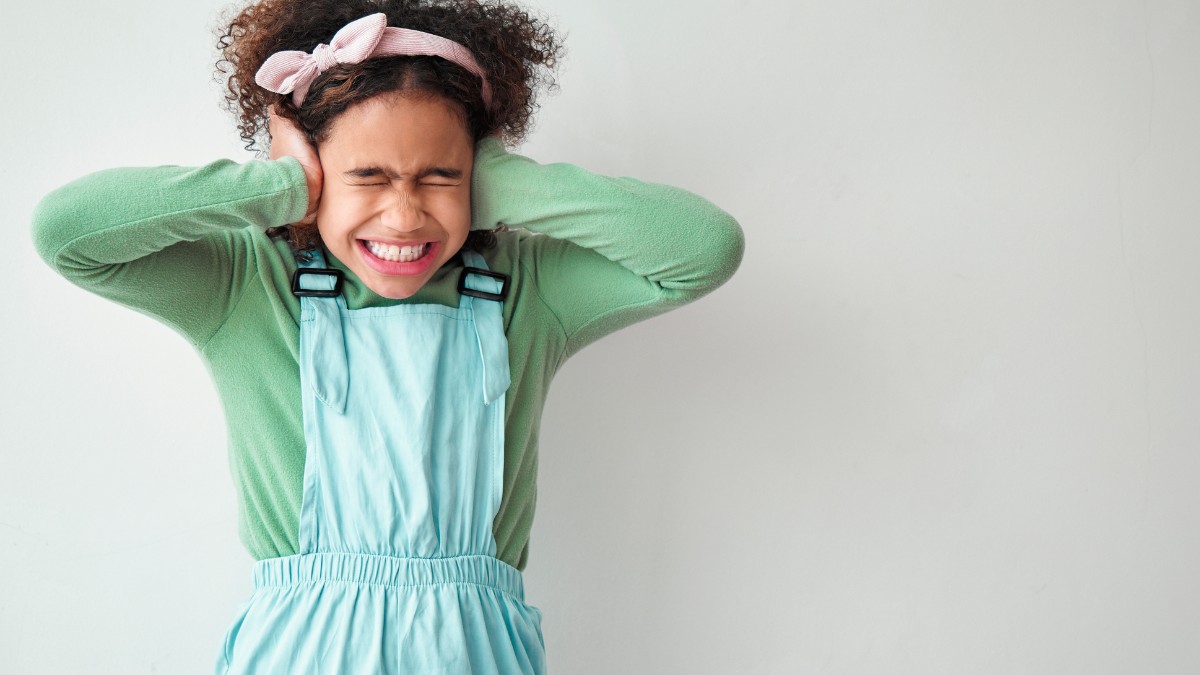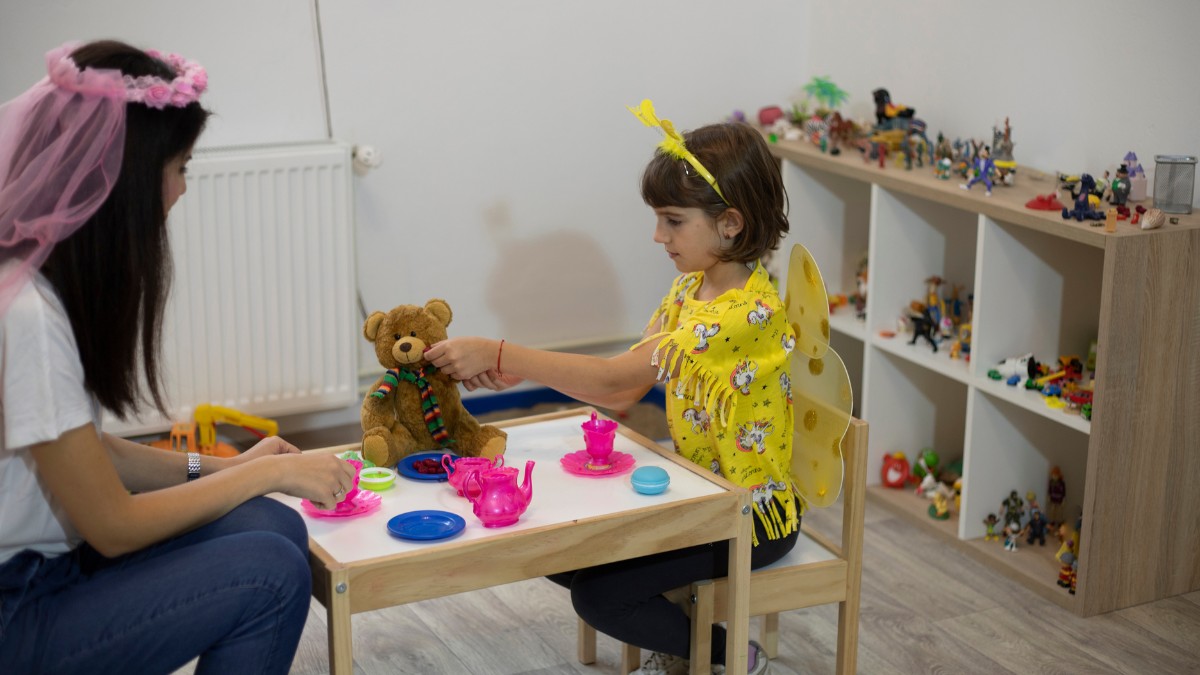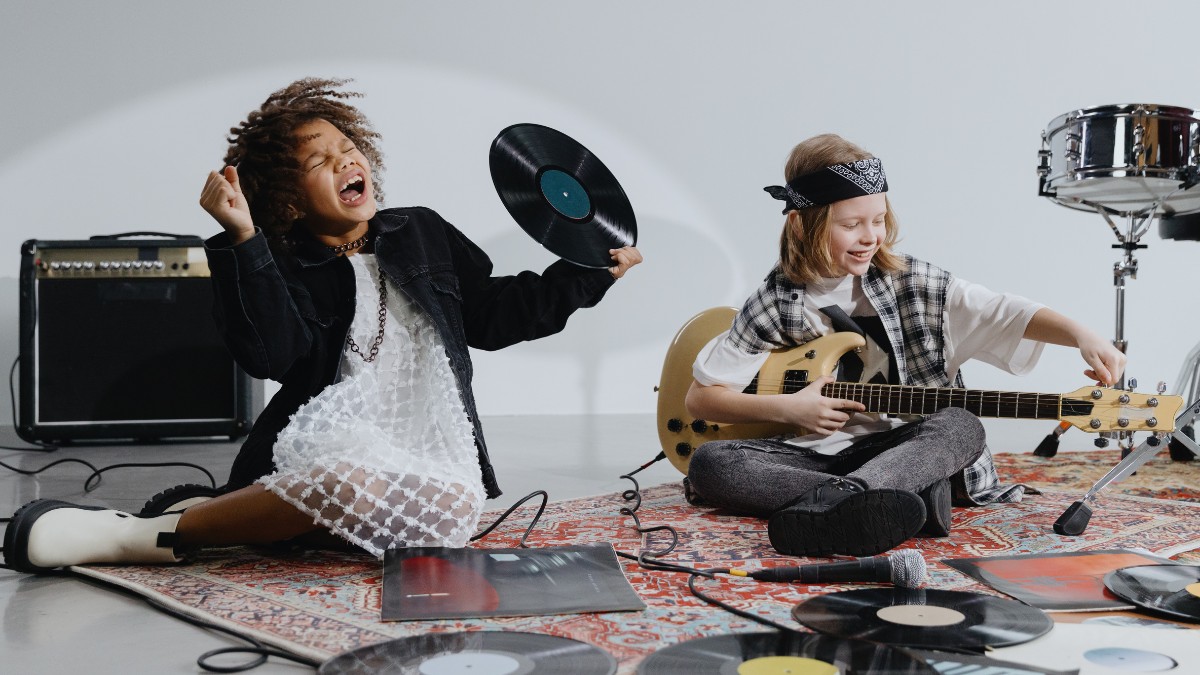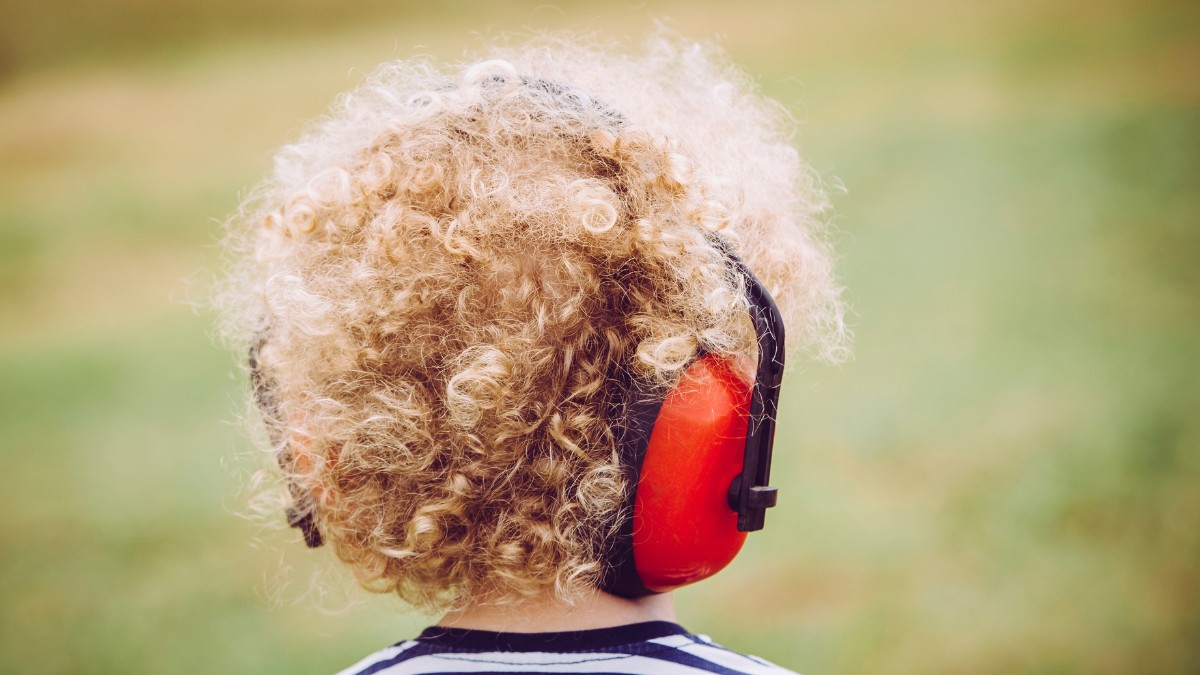Key Points:
- Sensory boards help children with autism explore and regulate sensory input through interactive, hands-on play.
- These boards support fine motor development, attention span, and sensory integration.
- This article includes examples of effective DIY and store-bought sensory board ideas tailored to autistic children’s needs.
Sensory challenges are common among children on the autism spectrum, and finding effective ways to support their needs can make a world of difference in daily life. According to the CDC, about 1 in 31 children in the U.S. is diagnosed with autism spectrum disorder (ASD), and many of these children experience either heightened or reduced sensitivity to sensory input. This makes tools like sensory boards especially valuable.
In this article, we’ll go over the best sensory boards for autism—tools that offer calming, hands-on ways to help children explore textures, sounds, and movements at their own pace. Whether you’re searching for a ready-made option or interested in a DIY approach, you’ll discover sensory boards that can promote focus, regulation, and joyful learning right at home, in the classroom, or in therapy.
What Are the Best Sensory Boards for Autism?
The best sensory boards for autism are those that offer a range of textures, sounds, movements, and visual stimulation to support sensory integration, motor skills, and focus. Boards should be safe, customizable, and engaging for the child’s unique sensory profile.
Sensory boards for autism can be incredibly effective tools in promoting calm, focus, and developmental growth. These boards—also known as busy boards—feature tactile elements that engage children through touch, sight, and sometimes sound. They’re particularly useful for children who benefit from sensory input throughout their day, and they work well at home, school, or in therapy sessions.
Why Are Sensory Boards Useful for Autistic Children?
Children with autism often experience sensory processing differences that make them more or less sensitive to everyday stimuli. Sensory boards offer a structured way to engage these senses, helping kids explore and tolerate various sensations in a controlled environment.
They are also effective for self-regulation. When a child feels overwhelmed or understimulated, interacting with a sensory board can provide the right kind of input to bring balance. This can prevent meltdowns and improve focus and behavior in a variety of settings.
What Features Should an Autism-Friendly Sensory Board Have?
An effective sensory board should cater to a range of sensory needs and developmental goals. There’s no one-size-fits-all, so it’s essential to observe your child’s reactions to various materials and activities. Safety, variety, and adaptability are top priorities.
Here are features to look for in sensory boards designed for autistic children:
1. Different Textures
Incorporate a variety of textures like Velcro, faux fur, sandpaper, rubber, and fabric to help children explore tactile sensations and build tolerance or enjoyment for different sensory inputs.
2. Interactive Elements
Include engaging items like zippers, locks, latches, and switches to encourage hand coordination and provide satisfying, repeatable actions that support attention, exploration, and independent interaction.
3. Cause-and-Effect Activities
Add elements like spinning gears or buttons that make sounds to teach cause-and-effect relationships while also providing a fun, motivating way for children to engage with their environment.
4. Visuals
Bright colors, mirrors, and LED lights appeal to visually oriented children. These features offer visual stimulation and can improve focus, tracking, and attention span in a playful way.
5. Auditory Components
Incorporate bells, squeakers, or crinkle paper for children who seek sound input. These elements should be optional and tailored to your child’s tolerance for noise or auditory stimulation.
6. Fine Motor Skill Activities
Include snaps, buckles, beads, and sliders to support fine motor development. These tasks strengthen hand muscles, improve dexterity, and prepare children for everyday tasks like dressing.
How to Make a DIY Sensory Board at Home
Creating a sensory board at home allows you to customize it based on your child’s preferences and needs. It can also be a cost-effective solution using materials you may already have.
Start with a wooden board or foam poster board, then attach different items using glue, screws, or Velcro (depending on safety needs). Rotate materials as your child’s interests and tolerance levels change.
Materials you can use:
- Household hardware: Light switches, doorknobs, wheels, chains.
- Fabric pieces: Denim, silk, burlap, fleece for varied touch experiences.
- Toys or game parts: Fidget toys, pop-its, small puzzles.
- Craft supplies: Pom-poms, beads, pipe cleaners, foam shapes.
- Recycled materials: Bottle caps, cardboard rolls, keys.
Safety note: Always supervise your child during use and avoid small pieces for younger kids to prevent choking hazards.
What Sensory Needs Can Sensory Boards Address?
Sensory boards are versatile tools that can support children who are sensory-seeking, sensory-avoidant, or have mixed profiles. Understanding your child’s specific sensory preferences can help you tailor the experience more effectively.
Common sensory needs they address include:
Tactile Sensitivity
Sensory boards help children gradually adapt to touch by exposing them to various textures in a safe, controlled way.
Sensory-Seeking Behavior
They provide appropriate sensory input through active components, helping meet sensory needs and reduce overstimulation or meltdowns.
Calming and Regulation
Rhythmic, predictable features promote calmness and emotional regulation during transitions, stress, or sensory overload.
Motor Planning and Coordination
Interactive elements strengthen fine motor skills and improve coordination, supporting daily tasks like dressing and feeding.
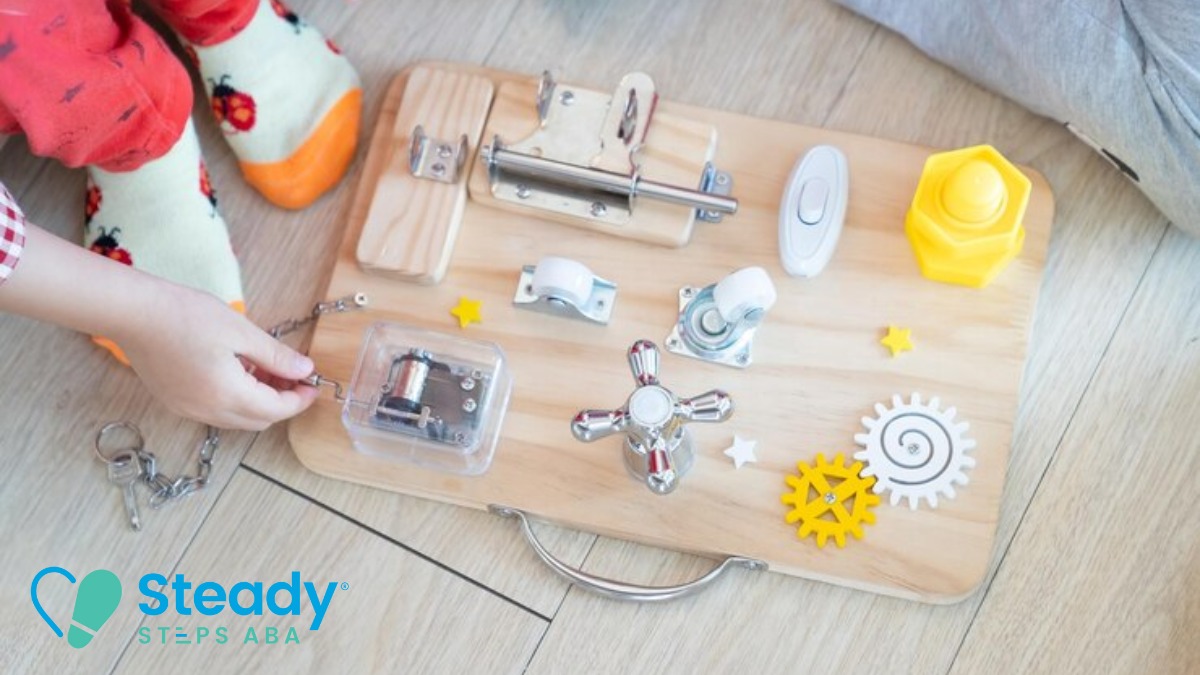
How to Use Sensory Boards During Daily Routines
Sensory boards can become a natural and calming part of your child’s daily routine, offering consistent sensory input that helps with focus, emotional regulation, and skill-building. Integrating them into everyday life doesn’t have to be complicated—small moments throughout the day provide great opportunities for engagement.
For example, sensory boards can be used during morning routines to keep a child focused while getting ready, or in the classroom as a tool for short, structured sensory breaks that reset attention. During therapy sessions, they can reinforce skills like turn-taking and labeling. At bedtime, a calming sensory board with soft textures and soothing visuals can help wind down from a busy day.
Tips for Choosing the Right Sensory Board for Your Child
Each child with autism has a unique sensory profile, so choosing the right sensory board means personalizing the experience. This requires careful observation and sometimes trial and error. Below are some tips for choosing or designing the right board:
1. Start Small and Build Gradually
Begin with just a few sensory elements on the board to avoid overwhelming your child. Gradually introduce new components based on their comfort and engagement levels.
2. Observe Your Child’s Responses Closely
Pay attention to how your child interacts with each element. Signs of joy or discomfort will help guide you in selecting the most supportive sensory features.
3. Match the Board to Your Child’s Needs
Tailor the board to your child’s specific sensory preferences—whether they crave texture, light, sound, or movement—to create a more meaningful and effective experience.
4. Prioritize Safety and Durability
Ensure all components are securely attached and free of choking hazards, especially if your child mouths objects or plays roughly with materials.
5. Rotate Features to Maintain Interest
Switch out sensory items every few weeks to keep the board engaging and fresh. This variety encourages continued exploration and development.
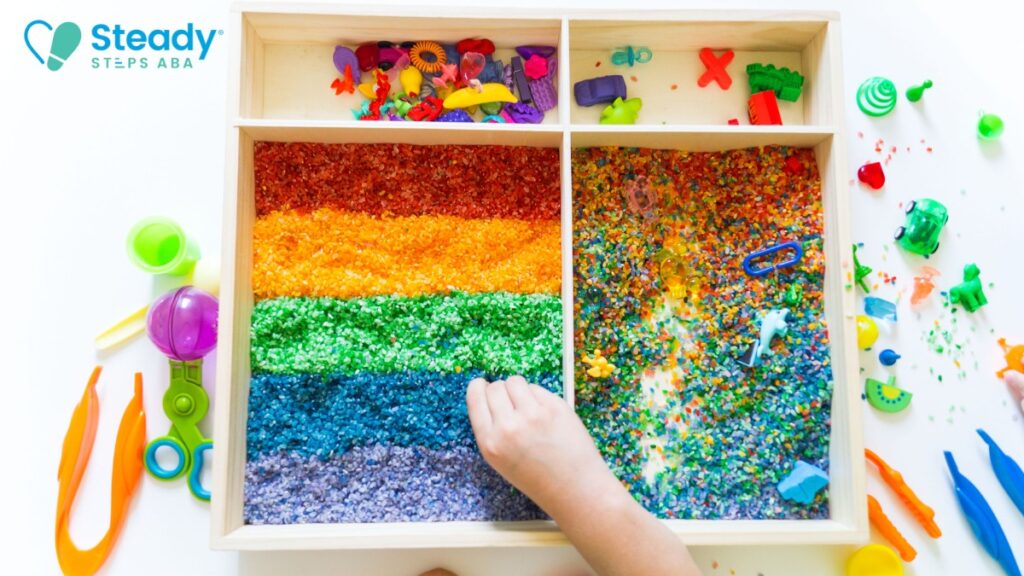
Can Sensory Boards Be Used in ABA Therapy?
Yes, sensory boards can be used effectively in ABA therapy sessions as tools for reinforcement, motivation, and skill-building. Behavior therapists often use them to encourage turn-taking, requesting, labeling, and to build tolerance to new sensory inputs.
Boards can also help children meet their sensory needs without engaging in maladaptive behaviors. When used intentionally and alongside behavior goals, they enhance the therapeutic experience—much like other sensory tools designed to provide calming input. For more on how these resources support regulation and development, check out our article Why Weighted Bean Bags are Ideal for Autism Support.
Foster Growth and Development With ABA Therapy
If your child benefits from tools like sensory boards and structured sensory activities, ABA therapy can take that support to the next level. At Steady Steps ABA, our team uses individualized therapy plans that focus on each child’s needs, including sensory regulation, communication, and life skills.
We understand how vital sensory input is to your child’s daily functioning. Whether you’re just discovering the value of sensory boards or looking to integrate them into a therapeutic plan, our ABA therapy in Maryland can provide meaningful support.
Get in touch with us today to learn about our compassionate, evidence-based ABA therapy in Maryland. Let’s take the next step together to help your child grow with confidence and calm.

